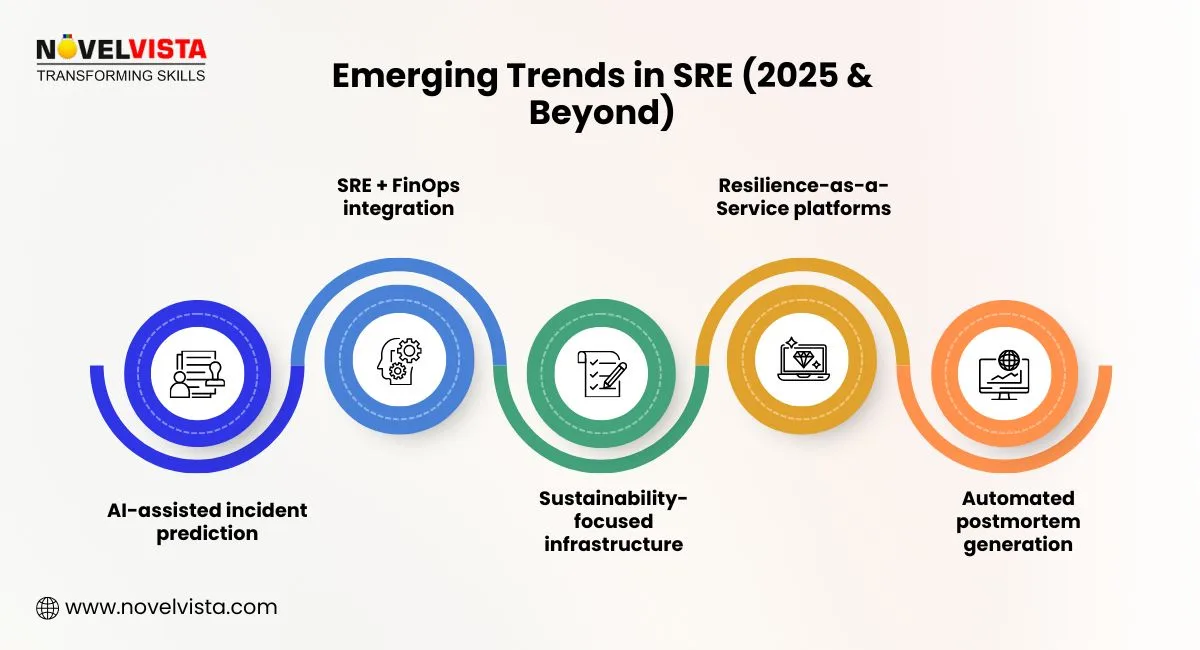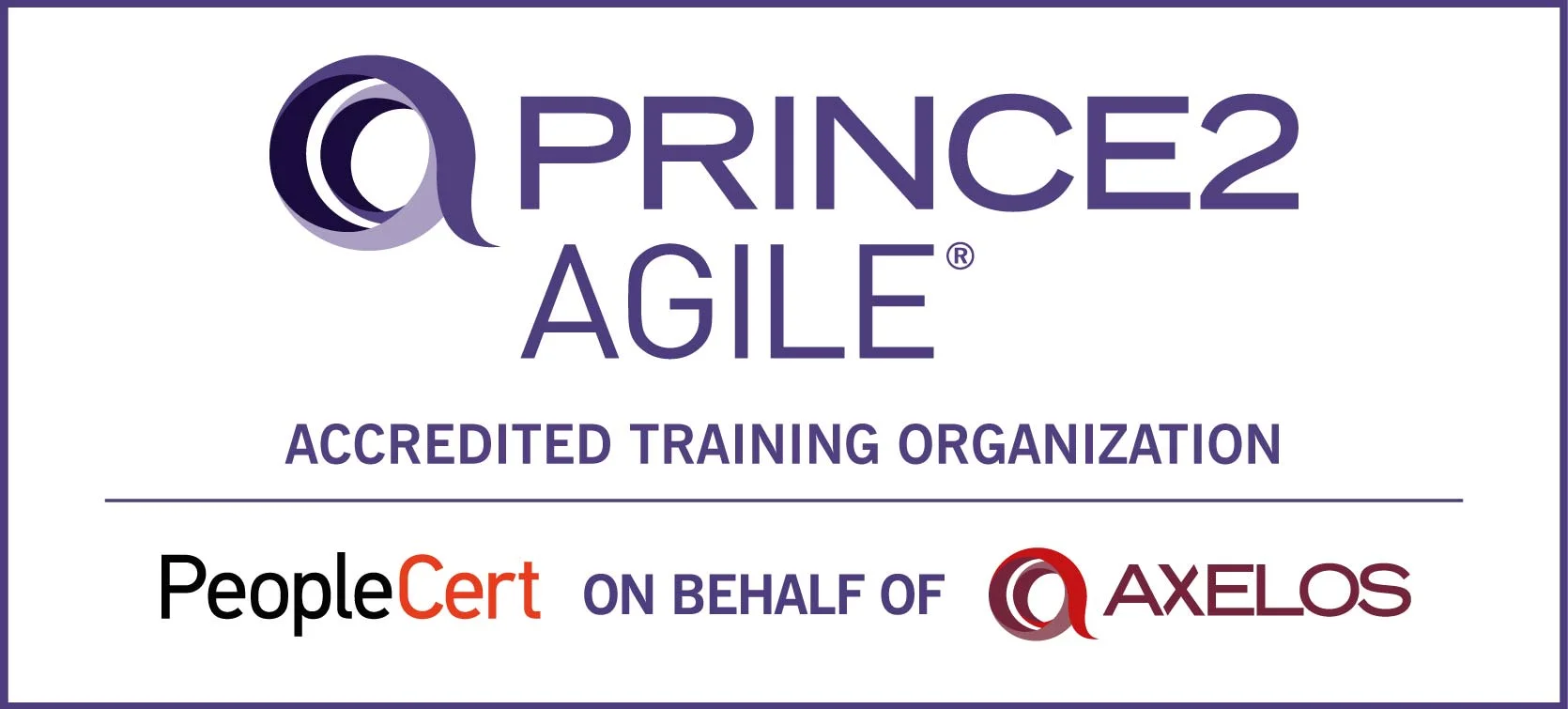- What Is Site Reliability Engineering (SRE)?
- 7 Site Reliability Engineering Principles
- Core SRE Responsibilities
- Skills Every SRE Engineer Should Master
- Essential Tools for SRE Teams
- Career Path: How to Become an SRE Step by Step
- The Future of SRE: Where It’s Headed
- Conclusion: Mastering SRE Roles and Responsibilities
Your system might be running, but is it truly reliable? This is where Site Reliability Engineering Principles come into play. SRE roles and responsibilities are all about applying software engineering approaches to IT operations, ensuring systems are scalable, reliable, and performant. By following these principles, organizations can reduce downtime, improve user experience, and proactively manage operational risks.
Demand for skilled SRE engineers is growing rapidly as businesses increasingly depend on high-availability applications. Organizations implementing SRE practices report up to a 50% reduction in unplanned downtime, along with significant increases in deployment frequency and overall service reliability, according to insights from the Google SRE Workbook and industry surveys, proving that SRE principles deliver measurable results.
This guide breaks down SRE roles and responsibilities, key principles, essential skills, and the tools that make SRE a game-changing discipline for tech organizations.
What Is Site Reliability Engineering (SRE)?
At its core, Site Reliability Engineering is the discipline that brings software engineering practices into IT operations. SRE roles and responsibilities focus on building automated solutions, monitoring systems, and designing scalable infrastructure to maintain reliability even under high demand.
SRE bridges the gap between development and operations, ensuring that new features don’t compromise stability.
For a deeper dive, check out our comprehensive blog on SRE Fundamentals.
7 Site Reliability Engineering Principles
- Reliability as a Feature – Treat system reliability like a product feature. Measure uptime, error rates, and latency using SLIs (Service Level Indicators) and SLOs (Service Level Objectives). Reliability becomes a visible and measurable aspect of your service.
- Embrace Toil Reduction – Automate repetitive operational tasks such as deployments, monitoring, and backups. Reducing manual work frees engineers to focus on innovation and improving system reliability.
- Monitoring Everything – Complete visibility is essential. Implement logging, metrics, and alerting across all systems to detect problems early and respond proactively.
- Manage Error Budgets – Balance reliability with feature development. An error budget allows teams to innovate safely while keeping uptime targets in check.
- Blameless Postmortems – When failures happen, focus on learning instead of assigning blame. Document incidents and apply insights to prevent recurrence.
- Capacity Planning and Scalability – Predict growth, handle traffic spikes, and ensure infrastructure scales efficiently. Planning capacity helps maintain service stability under changing loads.
- Continuous Improvement – Regularly refine processes, tools, and automation. Evaluate metrics, fix bottlenecks, and optimize system performance continuously.
These Site Reliability Engineering Principles create a culture where reliability is integral to every decision, not just an afterthought.
Practitioner Tip: When managing error budgets, ensure that both development and operations teams understand the trade-offs. Many organizations achieve faster release cycles without compromising reliability by actively tracking SLIs/SLOs and reviewing error budgets weekly.
SRE Roles & Responsibilities Checklist
Core SRE Responsibilities
A skilled SRE engineer wears many hats of SRE Responsibilities. Understanding SRE roles and responsibilities is essential for building reliable systems:
- Automation – Develop scripts and tools to minimize manual tasks, improve efficiency, and maintain consistent performance.
- Monitoring and Alerting – Set up dashboards, track SLIs/SLOs, and implement proactive alerts to catch issues early.
- Incident Response – Quickly detect, triage, and resolve outages while reducing downtime.
- Capacity Planning – Forecast usage trends, allocate resources efficiently, and ensure seamless scalability.
- Performance Optimization – Identify bottlenecks, enhance system speed, and maintain a smooth user experience.
- Collaboration – Work closely with development, DevOps, and operations teams to ensure reliable deployment pipelines.
- System Design – Help design resilient, scalable, and maintainable architectures.
- Release Management – Plan and coordinate releases to minimize failures and maintain uptime.
By understanding these SRE roles and responsibilities, teams can clearly define accountability and focus on high-impact reliability initiatives.
Case Example: A major e-commerce platform reduced customer-facing downtime by 40% within six months by implementing blameless postmortems and automating repetitive operational tasks, demonstrating how SRE principles translate into tangible business outcomes.
Skills Every SRE Engineer Should Master
To thrive as an SRE, mastering both technical and soft skills is essential. These shape how effectively you execute SRE engineer roles and responsibilities.
Technical Skills
- Programming & Scripting – Proficiency in Python, Go, or Shell for automating operational tasks and improving system reliability.
- Cloud Platforms – AWS, GCP, or Azure for scalable infrastructure management.
- Containers & Orchestration – Kubernetes and Docker for deploying and managing microservices efficiently.
- CI/CD Pipelines – Automate deployment workflows to enable faster and safer releases.
- Monitoring & Observability – Tools like Prometheus, Grafana, and Datadog provide visibility into system health.
- Infrastructure as Code (IaC) – Terraform and Ansible enable reproducible, scalable infrastructure.
- Logging & Tracing – ELK Stack and Kibana help track errors and diagnose root causes.
- Networking & Security – Understanding network protocols, firewalls, and security best practices.
- Database Management – Ensure reliability, replication, and performance optimization.
- Chaos Engineering – Tools like Steadybit test system resilience by simulating failures.
Soft Skills
- Problem-Solving – Quickly identify and resolve complex issues during incidents.
- Collaboration – Coordinate effectively across teams to achieve reliability goals.
- Analytical Thinking – Use metrics and data to guide decisions and improvements.
- Adaptability – Learn new tools and technologies in dynamic environments.
- Time Management – Prioritize tasks efficiently, especially under pressure.
Essential Tools for SRE Teams
Tools simplify and strengthen SRE practices. They help execute SRE responsibilities efficiently:

- Monitoring & Visualization – Prometheus, Grafana, and Datadog provide real-time insights into system performance.
- Infrastructure as Code (IaC) & Automation – Terraform, Ansible, Jenkins automate provisioning and deployments.
- Containerization & Orchestration – Kubernetes manages containers and scales applications reliably.
- CI/CD – Continuous integration and deployment pipelines ensure fast and safe releases.
- Incident Management – PagerDuty and Opsgenie streamline alerts, escalations, and response.
- Log Management & Tracing – ELK Stack and Kibana help trace errors and analyze logs efficiently.
- Chaos Engineering – Steadybit allows teams to simulate failures and test resilience.
Expert Insight: Tools like Prometheus and Grafana are most effective when configured with team-specific dashboards that align metrics to business-critical SLIs. In top-tier organizations, these dashboards inform daily operations and drive decisions during high-impact incidents.
Read More: The Best SRE tools in 2025
Career Path: How to Become an SRE Step by Step
-
A structured approach helps you grow into an expert SRE role:
- Build a foundation in software development, IT operations, and Site Reliability Engineering Principles.
- Gain hands-on experience with cloud platforms and system administration.
- Learn automation, CI/CD, and container orchestration.
- Work on monitoring, alerting, and incident management scenarios.
- Get certified in SRE or related DevOps programs.
- Advance to senior or lead SRE roles, managing reliability across teams.
The Future of SRE: Where It’s Headed
SRE is evolving rapidly with technology and business demands:

- AI-driven Monitoring – Predictive incident detection and proactive fixes.
- Integration with DevOps, DevSecOps, and FinOps – Unified reliability practices across teams.
- Chaos Engineering Expansion – More proactive resilience testing.
- Sustainable & Scalable Systems – Cost-effective and environmentally conscious system design.
Read More: Future of SRE after 2025
Expert’s View:
Matt Zelesko, Head of Site Reliability Engineering at Google, views SRE as evolving from traditional operations to balancing velocity and reliability, especially amid rapid AI and ML advancements. He emphasizes SRE’s core mission to enable teams to move quickly while meeting reliability goals.
Zelesko highlights AI as a critical assistant for improving incident detection, mitigation, and postmortems, allowing SREs to focus on complex engineering challenges and risk management earlier in development. He also stresses expanding SRE tools and practices beyond traditional teams to empower more groups within Google to manage production infrastructure effectively.
Conclusion: Mastering SRE Roles and Responsibilities
SRE engineers are the backbone of reliable, scalable, and high-performing systems. Mastering Site Reliability Engineering Principles, core skills, and SRE roles and responsibilities enables teams to deliver excellent user experiences and measurable business impact.
Next Step:
Take your reliability skills further with NovelVista’s SRE Foundation and SRE Practitioner Certification Training Courses. Learn the principles, hands-on skills, and tools needed to excel as an SRE engineer. Gain practical experience in incident response, automation, monitoring, and cloud systems to drive uptime and resilience. Enroll today and lead SRE initiatives with confidence.
Frequently Asked Questions
Author Details

Vaibhav Umarvaishya
Cloud Engineer | Solution Architect
As a Cloud Engineer and AWS Solutions Architect Associate at NovelVista, I specialized in designing and deploying scalable and fault-tolerant systems on AWS. My responsibilities included selecting suitable AWS services based on specific requirements, managing AWS costs, and implementing best practices for security. I also played a pivotal role in migrating complex applications to AWS and advising on architectural decisions to optimize cloud deployments.
Course Related To This blog
SRE Foundation and Practitioner Combo
SRE Certification Course
SRE Foundation and SRE Practitioner combo
SRE Practitioner
SRE Foundation
Confused About Certification?
Get Free Consultation Call









